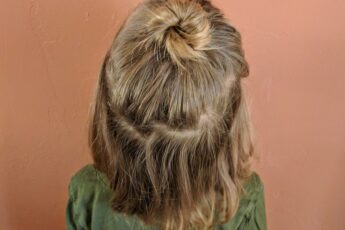Let me guess. You’ve tried the deep conditioners, the oils, the protein treatments… and your hair still isn’t listening. One day it’s dry. The next day it’s frizzy. And nothing seems to work for more than a few days. Sound familiar?
Well, let me ask you this: Have you ever thought about your hair’s pH level?
I hadn’t either. For the longest time, I thought pH was something only skincare people worried about. Then I learned that hair pH level optimization might just be the missing piece in the puzzle. It’s not about buying more stuff. It’s about understanding what your hair actually wants.
So let’s talk. I’ll walk you through what hair pH is, why it matters, how you can test it at home, and what you can do—right now—to bring your hair back to balance. This isn’t a science lecture. This is a quiet conversation between you and me.
Table of Contents
Key Takeaways
- Healthy hair lives in a pH range of 4.5 to 5.5
- Too alkaline = frizz, breakage, dryness
- Test your product pH with simple strips at home
- Use ACV and aloe vera to naturally rebalance
- Avoid baking soda, harsh sulfates, and high-alkaline products
- Stick to gentle routines that support your scalp and strands
What Is Hair pH and Why Should You Care?
Let’s break this down simply.
pH stands for “potential of hydrogen.” It measures how acidic or alkaline something is, on a scale from 0 to 14.
- 0 to 6.9 = Acidic
- 7 = Neutral
- 7.1 to 14 = Alkaline
Now, your hair and scalp have a natural pH of around 4.5 to 5.5. That’s slightly acidic. Why? Because this acidity helps protect your hair cuticle and keeps your scalp barrier healthy.
But here’s where things go sideways. When you use shampoos, conditioners, water, or even oils that are way off this range, you mess with that balance.
- Too alkaline? Your hair cuticles swell and lift.
- Too acidic? You risk irritation.
And once that balance is gone? That’s when you see frizz, breakage, dullness, and dryness. Your hair is basically raising a red flag.

How pH Affects Your Hair’s Behavior
Let me give you a real-life example.
Have you ever washed your hair and it felt like straw afterward, no matter how much conditioner you used? Or maybe you’ve deep conditioned and your hair still looks dull? That could be a pH issue.
When your products are too alkaline, they open up your hair’s cuticle layers. That means moisture leaks out. Your strands are left rough and vulnerable.
When they’re too acidic, they might cause buildup or irritate your scalp.
It’s all about balance. You want your cuticle layers to close just enough to keep moisture in—but not slam shut like a vault.
Also Read: The Ultimate No-Nonsense Guide to Mastering the Hair Color Level System
Signs Your Hair’s pH Is Out of Balance
You don’t need a microscope or lab kit to know something’s off.
Here are the signs your hair’s pH is probably out of whack:
- Constant frizz even in good weather
- Hair feels brittle or dry no matter what you apply
- You’ve got itchy or flaky scalp
- Hair won’t hold styles—it’s either too stiff or too limp
- Products that used to work suddenly feel useless
Honestly, it’s your hair and scalp’s way of waving their hands at you and saying, “Hey, I need a reset.”
How to Test Your Hair’s pH at Home
Okay, so how do you actually test pH?
You can grab pH test strips online or at a pharmacy. They’re cheap, and they work just fine.
Here’s what to do:
1. Squeeze a bit of your shampoo, conditioner, or DIY mix into a small cup.
2. Dip the test strip in and compare the color to the pH scale on the box.
3. If it’s around 4.5–5.5, you’re good. If it’s outside that range, it could be part of the problem.
Now here’s what most people miss: It’s not just about the products. Your water can have a high pH too. Hard water is usually alkaline, and that affects your hair every single wash.
Everyday Habits That Mess With Your Hair’s pH
Let’s be honest. Some of the things we do out of love for our hair might be working against us.
Here’s what might be tipping the pH scale:
- Clarifying shampoos – Great in moderation, but many are way too alkaline
- Tap water – Especially if you live in a hard water area
- DIY treatments – Lemon, baking soda, even clay masks can swing pH wildly
- Heat styling – It doesn’t directly change pH but damages the cuticle, which makes pH balance harder to maintain
- Skipping scalp care – A healthy scalp is where balanced pH starts
Sometimes it’s not even about doing something extra. It’s about tweaking what you’re already doing.
How to Optimize and Restore Your Hair’s pH
Now the good stuff—how to fix it.
Let’s keep this simple. You don’t need to throw out everything in your bathroom.
Here’s how to start optimizing your hair’s pH:
- Switch to pH-balanced shampoo and conditioner
Look for products labeled “pH-balanced for hair and scalp” or check that their pH is between 4.5–5.5. - Avoid high-alkaline ingredients
Skip anything with baking soda or harsh surfactants like sodium hydroxide. - Rinse with cooler water
Hot water can open up the cuticle too much. Lukewarm or cool rinses help it stay sealed. - Use a leave-in that maintains pH
Some leave-in conditioners are formulated to smooth the cuticle and restore balance.
You don’t have to change your whole life. Just be a little more mindful.
DIY Hair Rinses and Remedies for pH Balance
I love a good DIY. And the best part? Some of the most effective pH-balancing treatments are probably already in your kitchen.
Apple Cider Vinegar Rinse
- Mix 1 tablespoon ACV with 1 cup water.
- Pour it over your hair after shampooing.
- Leave it in for a couple minutes, then rinse out.
This brings your scalp and strands back to that sweet 4.5–5.5 range.
Aloe Vera Scalp Mask
- Mix aloe vera gel with a splash of rose water.
- Massage into your scalp.
- Let it sit for 10–15 minutes, then rinse.
Aloe has a pH close to 4.5–5.5, so it naturally helps without being harsh.
Tip: Don’t do these every wash. Once a week is enough.
Choosing Products That Support Healthy pH
Let’s face it, labels don’t always tell the full story. But here’s what I look for:
✅ Ingredients that are gentle:
- Aloe vera
- Glycerin
- Coconut-derived cleansers
- Lactic acid (in tiny amounts)
❌ Ingredients that mess with pH:
- Baking soda
- Sulfates (SLS, SLES)
- High pH soaps
If you’re unsure, a quick test with your pH strips can give you answers faster than waiting for your hair to cry out.
Also, don’t chase moisture products blindly. Some heavy creams may feel moisturizing but end up building residue that throws off your scalp’s balance.
Check Out: Simple Fixes For Hair Elasticity Restoration
Long-Term Tips for Keeping Hair pH in Balance
This isn’t something you fix once and forget. Think of pH balance like skincare—it needs gentle consistency.
- Stick with a pH-friendly routine
- Don’t pile on products—use what your hair actually needs
- Adjust your routine seasonally (your hair might need more moisture in dry months)
- Pay attention to how your scalp feels
- Treat clarifying like a reset, not a habit
Remember, hair pH level optimization isn’t a trend. It’s a quiet shift in how you care for your hair from the inside out.

Conclusion
If your hair’s been moody lately—breaking, frizzing, or just not cooperating—it’s not always about protein or moisture. Sometimes, it’s the pH. And once you bring it back into balance, everything else just clicks.
You don’t need a shelf full of products. You need awareness. Small shifts. Gentle consistency.
So go easy on yourself. You’ve got this. And your hair? It’s just waiting to feel whole again.
Frequently Asked Questions
How do I know my hair products are pH-balanced?
Look for products labeled as pH-balanced (between 4.5–5.5). If in doubt, test with pH strips.
Can I restore hair pH without buying anything new?
Yes. Apple cider vinegar and aloe vera are two great at-home options that work gently and effectively.
Does water pH affect my hair?
Definitely. Hard water tends to be more alkaline, which can throw off your hair’s balance over time.
How long does it take to rebalance my hair’s pH?
You might see results within a few washes if you make consistent changes. Scalp health may take a little longer, depending on damage.



